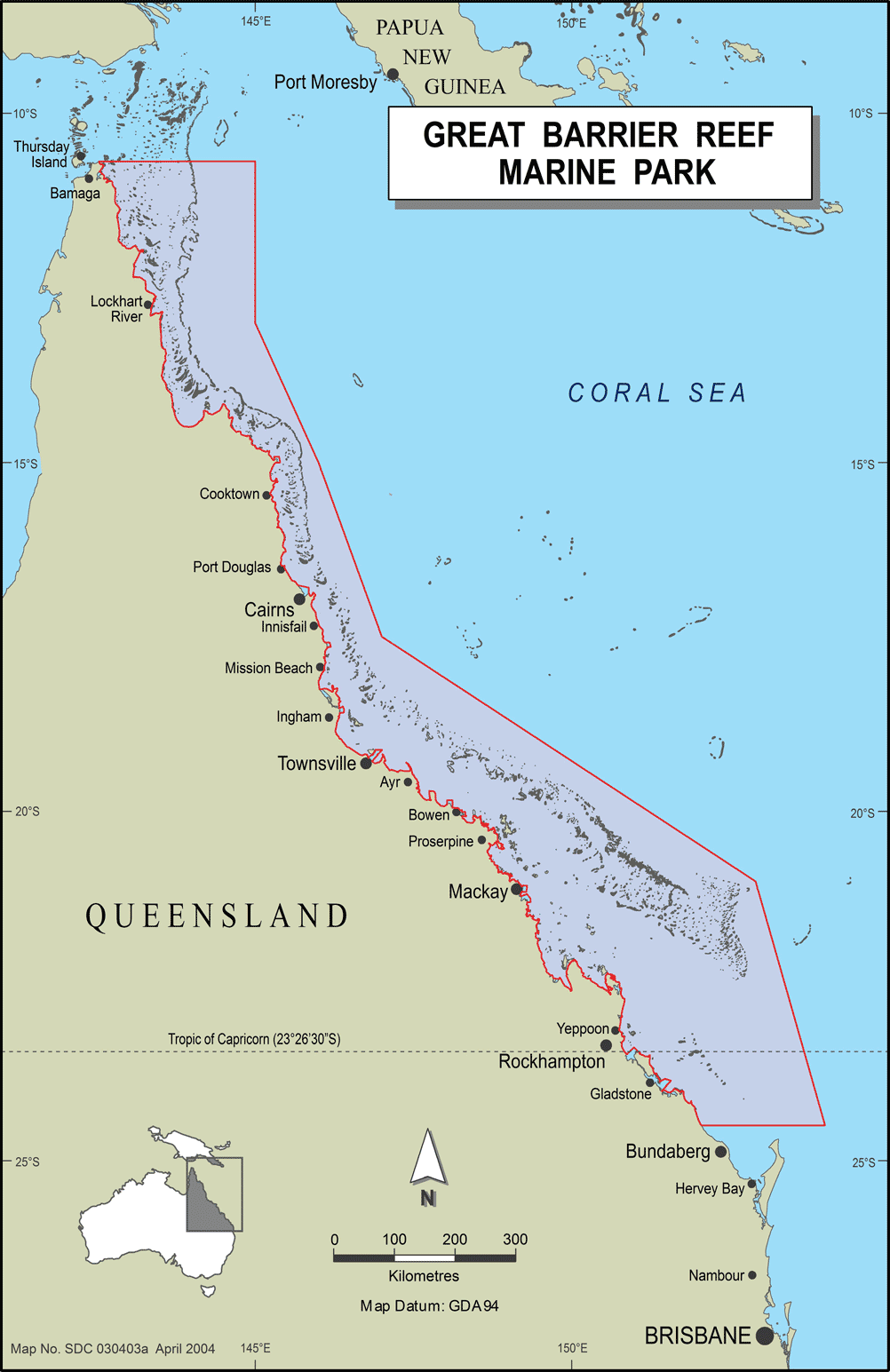The Great Barrier Reef
History and Information
The Great Barrier Reef is undisputed as one of the world’s most important natural assets. It is the largest natural feature on earth stretching more that 2,300km along the north-east coast of Queensland, Australia. To put it in perspective, it covers an area about the same size as the United Kingdom, half the size of the state of Texas or the length of the entire Japanese island chain. It is the only natural structure that can be seen from out space.
The Great Barrier Reef Marine Park is a series of over 2,900 individual reefs, stretching from the tip of Cape York in the north to lady Elliot Island in the south. Covering over 348,000km2, it comprises fringing and barrier reefs, continental islands, coral cays and 70 different bio-regions, making it the most ecologically diverse system in the world.
Although coral reefs have been around for over 500 million years, the Great Barrier Reef is relatively young at 500,000 years, and this most modern form is only 8,000 years old, having developed after the last ice age.
This World Heritage listed marine park supports the greatest concentration of life on the planet with over 1,500 species of fish, 400 different corals and 6 of the worlds 7 species of sea turtles are found here. Whales are often encountered in these waters from May to September.
At a glance
- The Great Barrier Reef is the world’s largest UNESCO heritage listed area
- Covers a huge 348,000 square km (134,364 sq miles)
- 1974 was declared a Marine Park
- 1982 inscribed onto the UNESCO World Heritage List
- It is not just one reef, but made up of over 2900 reefs, 600 rocky continental island and 300 coral cays.




